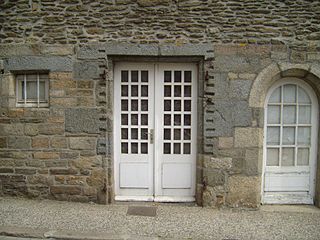From Guest Blogger Garret Stembridge: Seals of Approval — DIY Fixes for Leaky Windows and Doors

The truth is that just because you can’t see blatant evidence of a leak it doesn’t mean the leak is non-existent. And when you have insufficient seals surrounding your doors and windows, those little leaks can add up to huge drains on your energy usage, your heating and air output and your wallet.
So if you are looking to minimize your carbon footprint in your home or office building and cut down on your energy consumption, here are a few cost-saving DIY measures to control air leaks and improve your energy efficiency in one fell swoop!
Windblown Windows
When it comes to windows, especially if they are old and energy-inefficient, one of the quickest ways to whip them into shape is to replace worn weather-stripping and add a new bead of caulking.
To begin, make sure to clean the surface of the window casing and remove paint chips from around the edges. If you have dirt and debris in the way, the weather-stripping won’t adhere and all of your efforts will be for naught.
Although there are many types of weather-stripping products you can attach, the easiest type to install yourself is pressure-sensitive adhesive-backed foam. Sold in rolls that you can custom cut as needed, this foam works well on windows and doors alike and can last up to three years before replacements are required.
Simply measure the length of the window or door jamb you are sealing and cut the necessary number of strips you need. Peel back the cover off of the adhesive backing and firmly press the strips into the seams to achieve a solid seal.
As an installation tip, you could cut one long strip to go around the entire window or door but by cutting out 4 shorter pieces (one per side), you only have to replace that individual strip if it becomes loose or damaged rather than ripping out the entire seal and starting over.
Not only does this type of weather-stripping seal the casement from air invading or escaping, but it also serves to silence those startling noises from slamming windows and doors!
Quick Caulking
One of the most effective seals for windows is a fresh application of caulking. As an added bonus, you’ll also prevent those insect invaders from finding entry via the slightest cracks in your windows!
Here’s how to do it yourself in a few easy steps:
- Gather your materials: a small putty knife or scraper, a new tube of caulk, a caulk gun, a pair of scissors and a nail to puncture the tube of caulk, a flat craft stick (or your wet finger works just as well but beware of splinters!), and a rag.
- Carefully scrape away all old caulking from the corners around the window.
- Following the manufacturer’s instructions, load the tube of caulk into the gun.
- Carefully cut away some of the nozzle tip, just enough to puncture the tip with the nail. You are aiming for a ¼” bead of caulk and you can always cut more if needed but you can’t add the tip back so be conservative when cutting the nozzle.
- Using even pressure and a slow, steady pace, apply the caulk to the cracks. The goal is creating one continuous, smooth line and this takes some practice so don’t be afraid to try a few introductory lines on a piece of paper beforehand to get the feel of it.
- Smooth the caulk into the crack using the craft stick or your wet finger.
- Follow this procedure until you have sealed all cracks between the window trim and the siding.
- Clean up any splotches and messy patches, plus the tip of the caulk tube, with your damp rag.
- Make sure to wash your hands thoroughly when you’re finished!
Drafty Doors
In addition to weather-stripping and caulking around cracks in the door jamb or trim, keep drafts down by sealing the bottom of your door with a door sweep. If you can see light under the door that is coming in from outside, you know a sweep will be beneficial.
Door sweeps are most commonly comprised of a narrow strip of plastic, rubber, neoprene or “broom” brush material that runs the length of your door. This sweep is attached to a carrier band of aluminum or wood which is then screwed into the bottom of your door. From inside the house, simply place the sweep at your door base just high enough so that it brushes the floor and mark where the holes line up on your door. Then pre-drill the holes and screw the sweep into place. Voila!
What other ways have you found to improve your energy-efficiency through DIY projects around your house or office?
Garret Stembridge runs marketing programs for Extra Space Storage. The company operates self-storage facilities across the United States. In California, visit them here.
